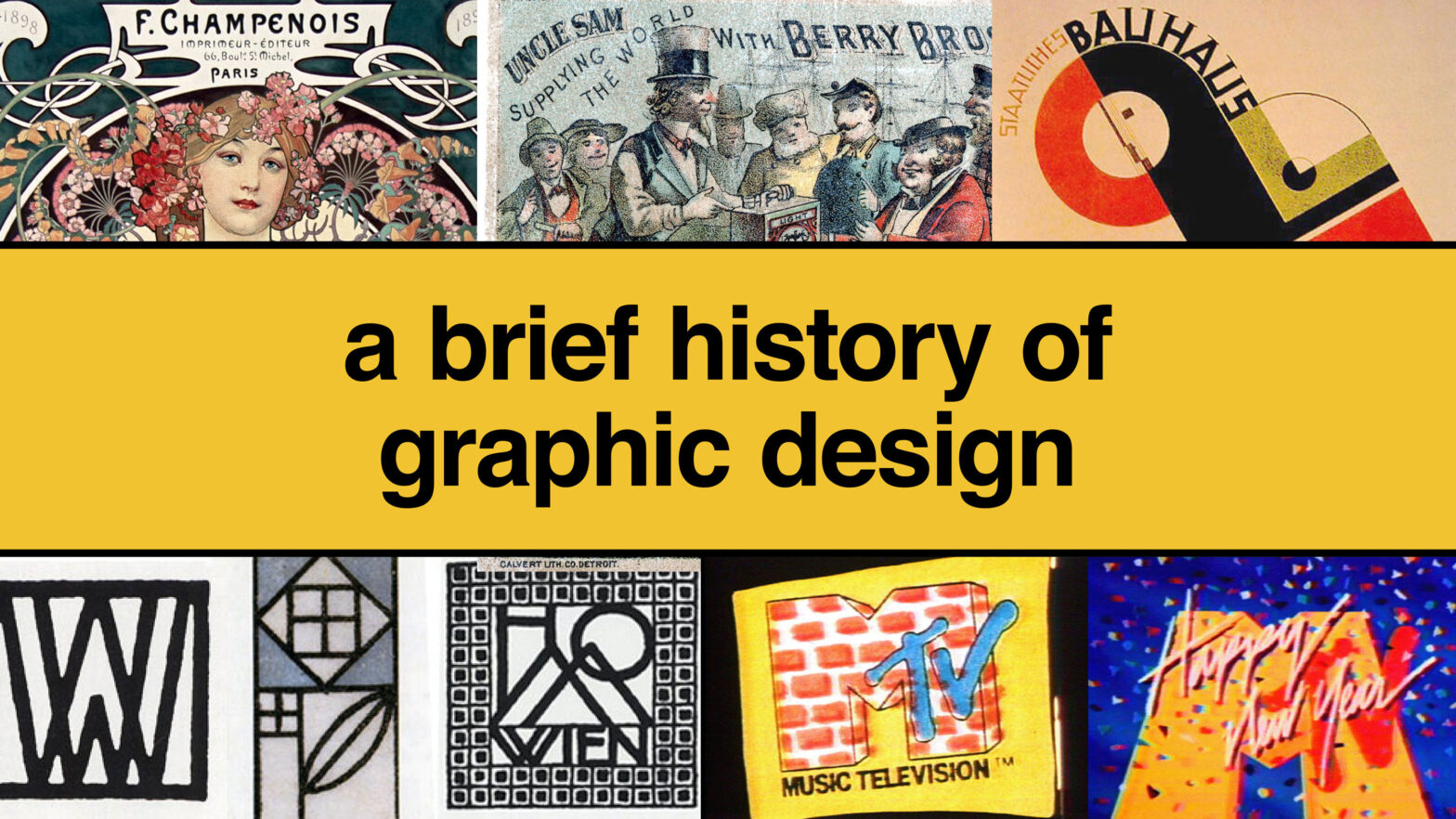The progression of visual communication from cave paintings to digital software can serve as great inspiration to designers.
The roots of visual communication stretch back to caveman times around 38,000 BCE.
Written languages began in the form of iconography carved into stone then later into calligraphy.
- Sumerian written language – 3300 – 3000 BCE
- Advancements in Chinese printing 200 CE – 1040 CE
- Medieval calligraphy – 700s
The first logos were the coat of arms, used to represent family houses or territories in Europe around 1100 AD.
Like logos, a house’s coat of arms aimed to represent the values, characteristics and styles of the family.
With the invention of the printing press in Europe in 1440, humanity was able to recreate text, art, and design on a massive scale, and for relatively cheap.
The first mass-produced print ads started in the early 1600s.
Lithography introduced printing with colored inks in the early 1800s.
While used primarily for recreating paintings for home decor, lithography opened new doors for advertising.
The Art Nouveau design movement in the late 1800s conveyed subjects through abstract representation instead of realist depictions.
The first graphic design agency emerged in 1903 in Austria.
Bauhaus and Art Deco design movements of the early 1920s used simple shapes, typography stylized and geometric ornamentation.
The Bauhaus, Art Deco, and Swiss design movements were a major shift in the art and design worlds in the early to mid 1900’s and focused on modern shapes and typography.
In the 1940s, Designer Paul Rand shaped the future of the graphic design industry with his logo designs and writing.
The digital era slowly began in the 1980s with the mass adoption of home computers. Basic programs like Microsoft Paint and Photoshop made graphic art accessible to the masses.
Branding evolved as well, MTV was a front-runner in modern branding.
The birth of the internet brought on 3D and then flat design illustrative styles.
Today’s graphic design landscape is rapidly evolving. Web design, user experience (UX) design, motion graphics, and interactive media have become integral parts of modern graphic design.
The future of graphic design will continue to be shaped by a combination of technological innovation, societal shifts, and the creativity of designers themselves.
